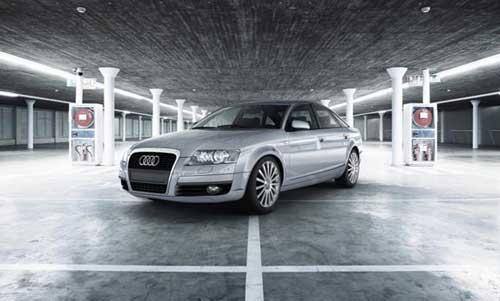 The automotive industry has always been associated with advancements and complexity in various technologies. Technology is the backbone of the automobile industry. With increase in the demand for automobiles, the competition across automotive manufacturers has also increased. Each manufacturer, to sustain its market share, is focusing on the rapid innovations in technologies. The R&D expenditure of automotive companies has shown a significant increase in the past few years. According to the report published by European Automobile Manufacturer’s Association, aggregate amount of 4% of the automotive industry’s turnover in Europe, is spent for R&D over the past decade. This substantiates the overall spending on R&D in this industry. The R&D expenses are accompanied with advancements in the technology with increased complexity. However, the progressions in the technologies are usually associated with increased prices. At some places, while maintaining the balance between technology and cost, there is a possibility of regulation violation. Hence, offering cost-effective technology advancement, compatible with regulations is a task for automotive industry. Till date, the industry is putting its best efforts to deliver the customer-centric products which are equally accepted by regulatory authorities.
The automotive industry has always been associated with advancements and complexity in various technologies. Technology is the backbone of the automobile industry. With increase in the demand for automobiles, the competition across automotive manufacturers has also increased. Each manufacturer, to sustain its market share, is focusing on the rapid innovations in technologies. The R&D expenditure of automotive companies has shown a significant increase in the past few years. According to the report published by European Automobile Manufacturer’s Association, aggregate amount of 4% of the automotive industry’s turnover in Europe, is spent for R&D over the past decade. This substantiates the overall spending on R&D in this industry. The R&D expenses are accompanied with advancements in the technology with increased complexity. However, the progressions in the technologies are usually associated with increased prices. At some places, while maintaining the balance between technology and cost, there is a possibility of regulation violation. Hence, offering cost-effective technology advancement, compatible with regulations is a task for automotive industry. Till date, the industry is putting its best efforts to deliver the customer-centric products which are equally accepted by regulatory authorities.
The regulations and customer preference are the two key factors which fuel the technology improvements. The need of personal transportation and improved infrastructure has raised the demand for passenger cars, whereas reason such as enhanced buying power, raised per capita income and improved standard of living has increased the demand for premium cars. Alternatively, increasing construction activities and industrialization is increasing the demand for commercial vehicles. This increase in demand for vehicle has led to increased air emissions, resulting in violation of environmental regulations for air emissions. To meet these regulation demands, the automotive manufacturers have shifted from conventional carburetors to fuel efficient fuel injection systems. The next step was to shift towards eco-friendly or green-technology, which was achieved by electric vehicles using advanced lithium-ion batteries.
The advancements in powertrain technology have significantly increased the average vehicle speed. To control these speed machines, new brake types (such as ceramic disc brakes) and brake systems (such as Electronic Stability Control (ESC), Autonomous Emergency Braking (AEB) and Anti-Lock Brakes (ABS) etc.) are introduced. The regulations concerned with safety as well as environment are introduced in terms of reduced stopping distances, mandates on ESC/ABS/AEB and most importantly use of Non-Asbestos Organic (NAO) brake pads. This has altered the brake market. With brakes, the need for lights is equally important for vehicles. The automotive lighting has evolved from simple incandescent lights to present day LED and xenon lights with long-life and minimized energy consumption. The safety regulations for automotive lighting such as Daytime Running Lamps (DRLs), positioning of lights, adaptive emergency brake lights, adaptive front lighting etc. is fuelling the growth of innovative products in this market.
Increasing number of vehicles has raised traffic concerns with increasing number of accidents and fatalities. The World Health Organization (WHO) Global Report on Road Safety (2013) suggests, even if eighty eight countries have shown decreased number of deaths, the total number of deaths in traffic accidents is significantly high – 1.24 million per year. This has raised a global concern and served as a warning to automotive manufacturers as well as regulatory bodies, which introduced biggest technological innovation of various Advanced Driver Assistance Systems (ADAS). The systems such as Adaptive Cruise Control (ACC), Lane Keep Assist (LKA), Autonomous Park Assist, Drowsiness Monitoring System (or driver attention system), Blind Spot Detection (BSD) System etc. have been introduced to assist the driver and with the intention of reduce the traffic accidents. With time, these systems are getting popular among the buyers and the upcoming safety regulations pertaining to these systems are anticipated to elevate the demand for these systems. The manufacturers are now in the next stage of ADAS, which is termed as Autonomous Cars. These cars will eliminate the partial interference of the driver as in case of ADAS driven cars. However, cost of the technology, regulatory framework for these cars and commercialization is the biggest concern for the time.
There are certain technologies (such as start-stop, displacement on demand (DOD)) from the industry which did not gain the admiration, primarily due to their cost. These technologies have proved their efficiency in terms of displacement, fuel consumption, however due to certain reasons (for instance battery change and engine setup modification is required for start-stop system, or sensors and deactivation mechanism required for DOD) these technologies could not gain attention with time.
The aforementioned information propose that the cost-effective technologies which have proved their efficiency, are always been accepted by the buyers. In addition, certain regulations have encouraged the development and implementation of advanced technologies. Hence, such technologies, which while adhering to the norms and regulations, are also cost-effective and hence preferred by the buyers, will always be sustained by the automotive industry.
(Source: Markets & Markets)






